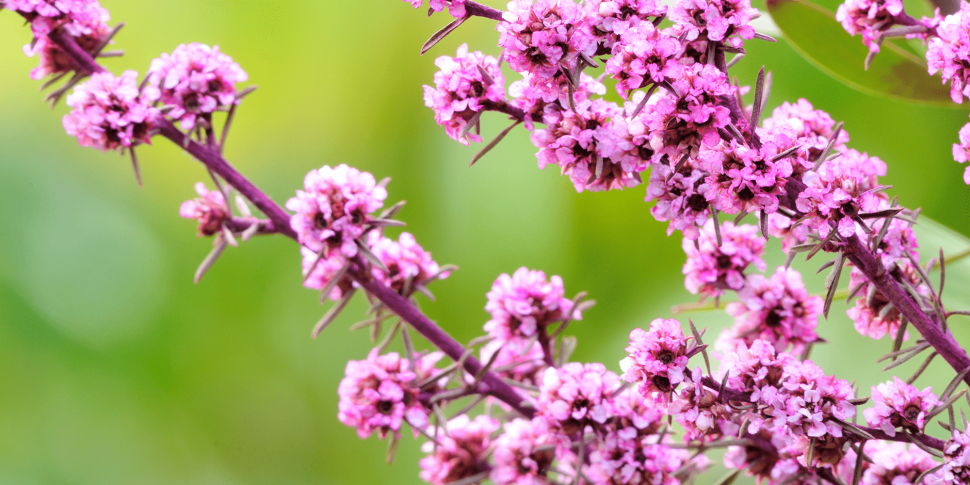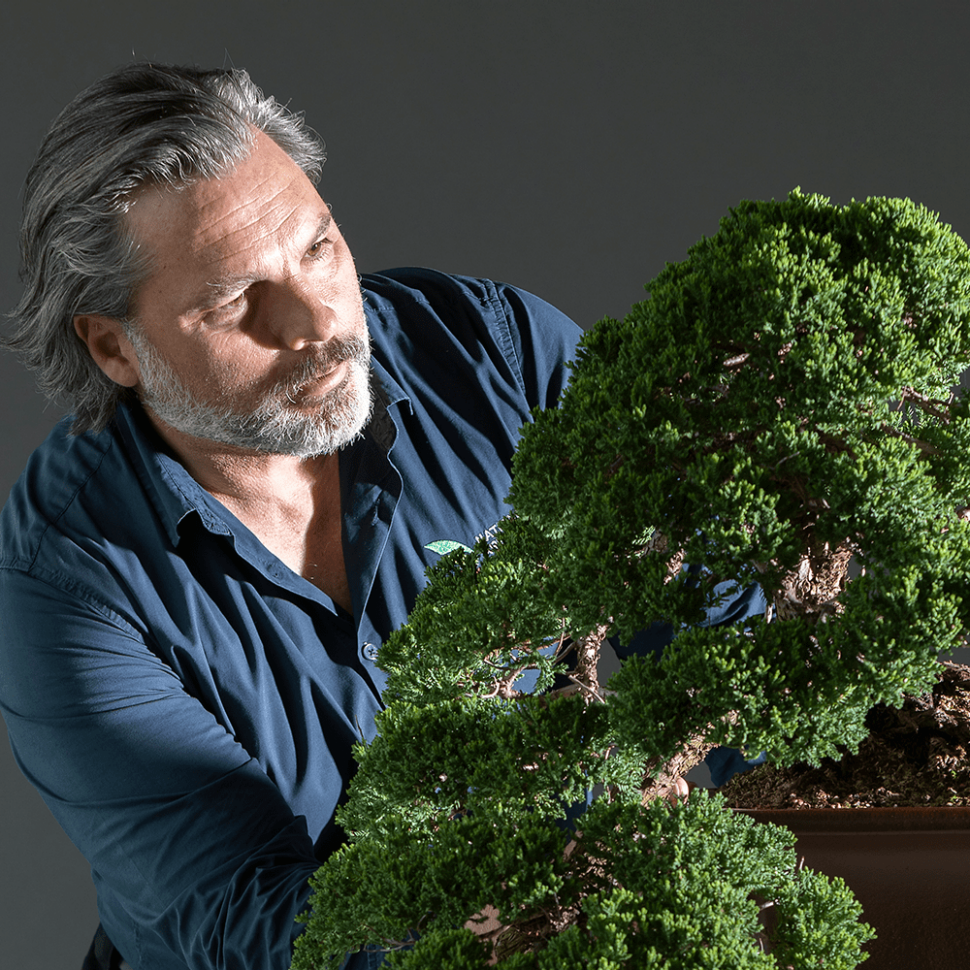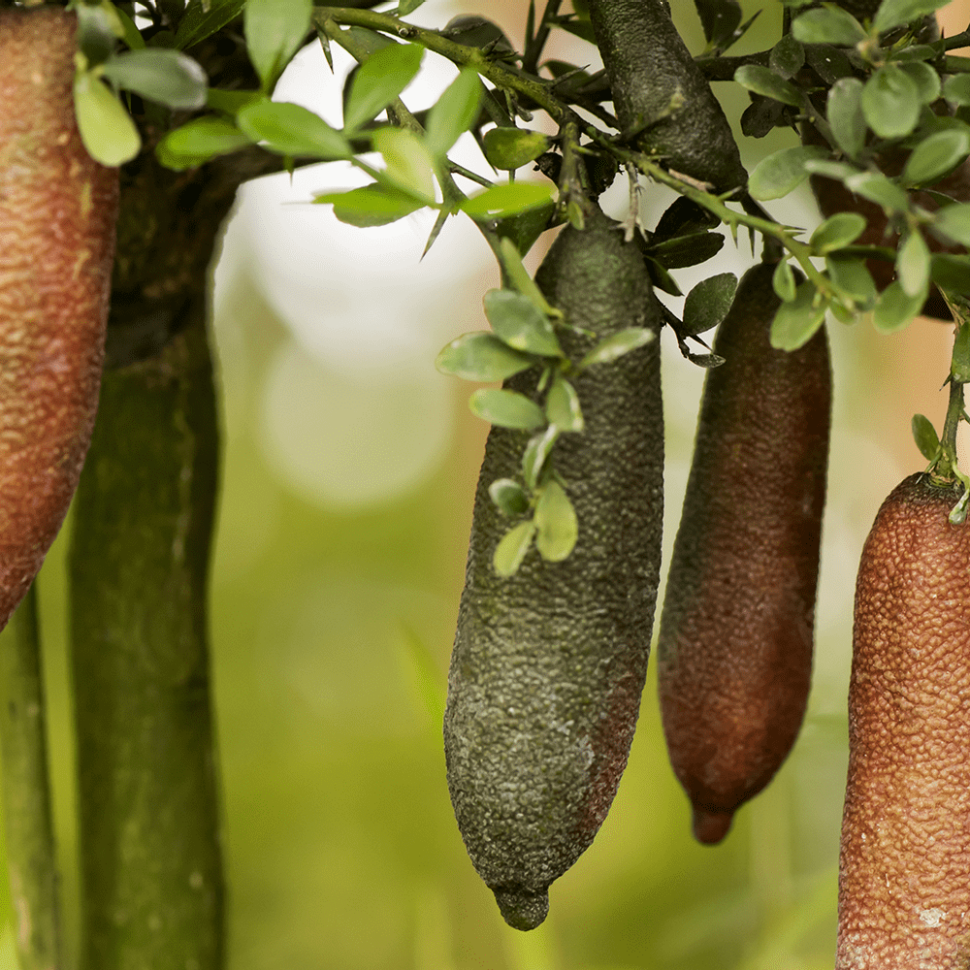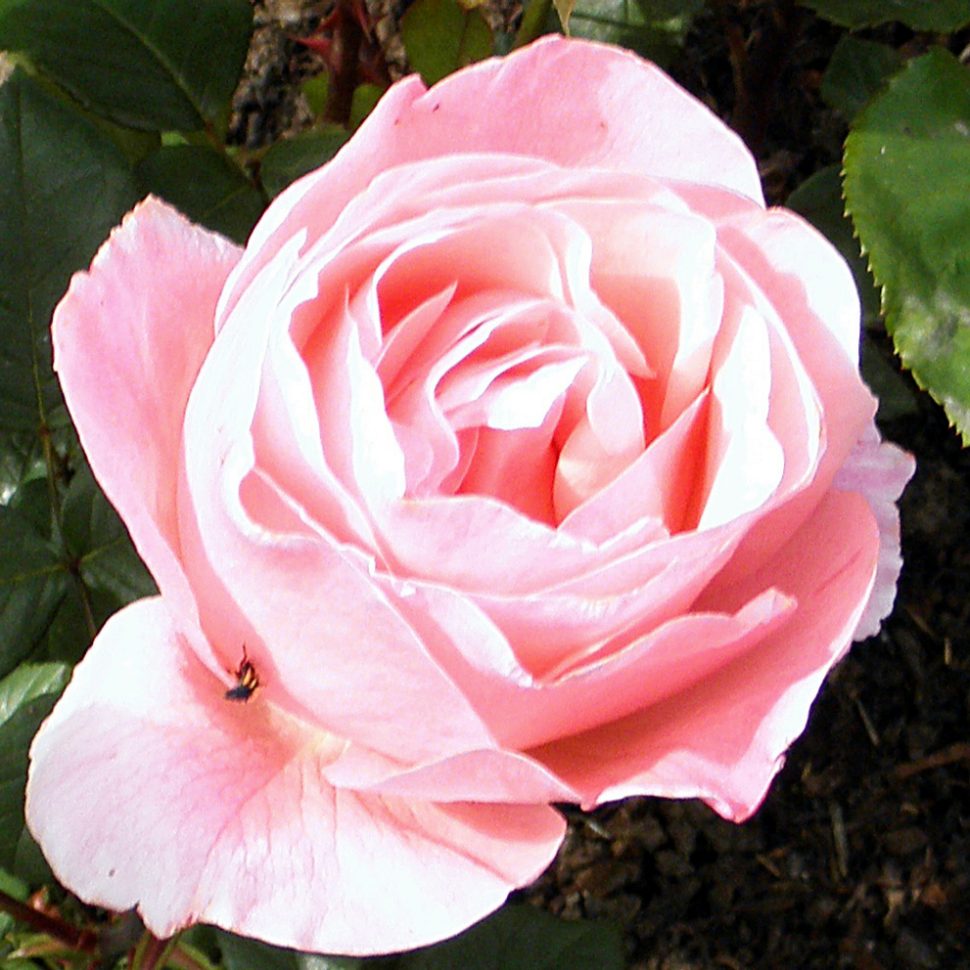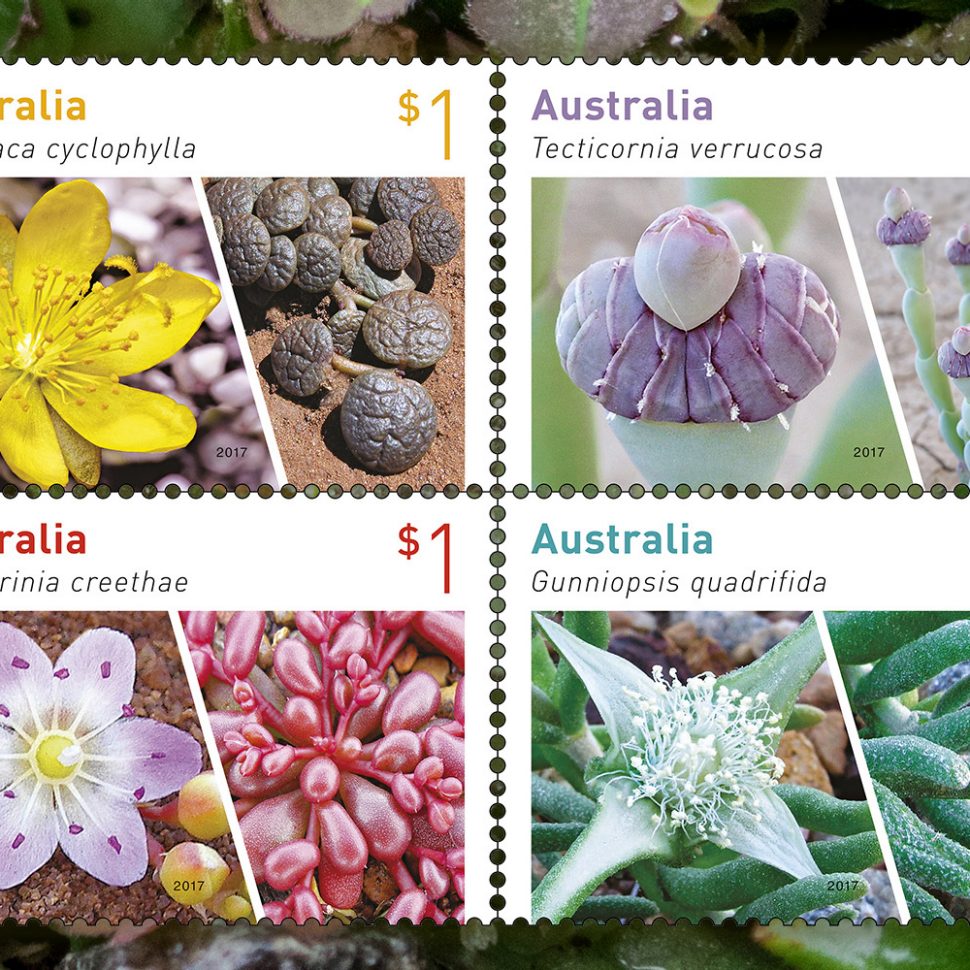Think of wildflowers and at some point your mind will inevitably turn to the west! Why? Because Western Australia is home to some of the most spectacular wildflowers in the world. And it’s rich in more than minerals too – over 10,000 species of plants have been discovered there. WA is known as the Wildflower State for good reason.
It's estimated that just over 775,000 visitors flock to key areas such as the Stirling Range National Park, Fitzgerald River National Park, Lesueur National Park and even the environment around Perth, to witness a spectacular display — a floral treasure trove made up of thousands of Australian native wildflower species.
The 2016 Wildflowers stamp issue, designed by Simone Sakinofsky, showcases four beautiful and distinctive floral species from the south-west of the state: Blue Devil (Eryngium pinnatifidum), Spiny Mirbelia (Mirbelia spinosa), Rose Cornflower (Isopogon formosus subsp. dasylepis) and Golden Rainbow (Drosera microphylla).
Yet how do such glorious blooms even grow in this environmentally challenging part of the country? South-western Australia is known for its infertile, sandy soils and low rainfall. These conditions are difficult to reconcile with such stunning floral displays. So what’s going on?
Kevin Thiele, curator of the WA Herbarium and consultant to researcher Hilary Ericksen on this stamp issue, says that it may be these very environmental features that help wildflowers to flourish.
“Western Australia’s a tough place to grow in, and maybe during their evolution plants in Western Australia have had to compete that little bit more to survive there. That may be why our wildflowers are so spectacular and interesting. ”
Dry soil means open canopies
The dry and infertile soils of WA create a landscape blessed with many species of herbs and dwarf shrubs, rather than one dominated by fewer species of trees. This means smaller plants are not shaded out of existence. The challenges faced by plants in this area may also mean many species can “have a go” and co-exist, rather than a few species dominating as happens in more favourable climates and conditions.
The dry conditions in some areas also mean trees and shrubs are few and far between, which allows wildflowers to come into their own during springtime, when water, nutrients and pollinators are plentiful.
There are some really old rocks in WA …
Even if the conditions are ripe for wildflowers, why is there such species diversity in WA? Kevin Thiele says it’s partly to do with the age and isolation of the region.
“The southwest of WA is surrounded on two sides by ocean and on the other two by desert, so in many ways it’s like a large island. This means many of the species that've evolved there have been unable to expand and colonise elsewhere, resulting in many species being found nowhere else.”
“It may also be the great abundance of sand in WA – the sandplains we know are rich in wildflowers – is part of the reason for its diversity. Elsewhere in Australia and the world sandplains are also rich; we just happen to have an awful lot of sandplains!”
In addition, WA has been largely unaffected by changes, such as volcanic eruptions and glaciers, that have caused mass extinctions elsewhere.
“Western Australia has had an utterly different evolutionary history from many regions in the Northern Hemisphere where glaciers retreated only a few thousand years ago, and that consequently have relatively few species. This is why one National Park in WA – Fitzgerald River – has more species of plants than the whole of Great Britain.”
Competing and co-existing
As well as climate, soils, age and isolation, the pressure to compete for resources and pollinators has also led to the development of new species over time.
Almost all plants need to attract pollinators using colour, scent and form. In addition, some wildflowers use pollinators such as birds (particularly species with large, red flowers and robust stems for birds to land on). And some in WA are even pollinated by mammals, such as the Honey Possum. In fact, more species are pollinated by birds and mammals in WA than anywhere else in the world.
The south-west: A biodiversity hotspot
The four species chosen for the 2016 Wildflowers stamp issue come from the South West Botanical Province of WA. The region has been identified as one of only 25 biodiversity hotspots on earth. At least 8000 species of plants occur in the Province, three quarters of which are found nowhere else in the world.
But as Kevin Thiele points out, biodiversity hotspots come with a dark side: “The hotspots combine a wealth of species with a wide range of threats to those species. Conservation is important the world over, but particularly so in biodiversity hotspots such as the South West of Western Australia. And the fact that so many of our species can grow nowhere else makes this even more important.”
The need to protect WA wildflowers
Kevin Thiele’s interest in wildflowers dates back to his childhood: “I started out as a kid being very keen on birds, but there are not so many of them and when I started running out of new birds to see I started looking at the plants that the birds were sitting in. It’s grown from there into a lifelong fascination.”
Sadly, he notes that wildflower habitats in WA, like all wildflower habitats globally, are under threat from man-made changes such as land clearing and weeds.
“An enormous amount of the south-west has been cleared in the past for agriculture. We may never know how many species we’ve lost through this, but we certainly know that many that still survive are now very rare and threatened. The accidental introduction of the dieback fungus Phytophthora has also caused botanical havoc, especially along the southern coast and the Stirling Range. And then there’s climate change. While we can’t ascribe any species declines to climate change so far, watch this space – it’s likely to be the biggest challenge yet, coming on the back of the other threats such as clearing, weeds, and dieback.”
Thankfully, there are projects operating to protect the wildflowers of WA, including a tissue culture program for critically endangered species, based at the Western Australian Botanic Gardens and Parks Authority, and a Threatened Flora Seed Centre and species recovery program based at the WA Department of Parks and Wildlife.
The Wildflowers stamp issue was available from 14 December 2015 and is no longer on sale.
View the gallery and technical details from this issue.
This content was produced at the time of the product release dates and will not be updated.
